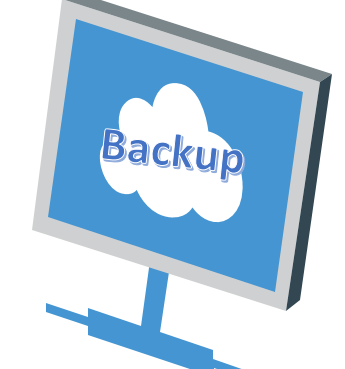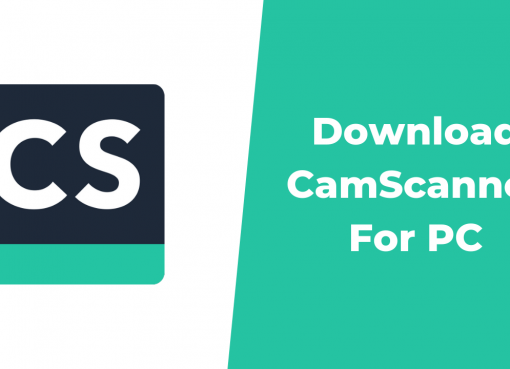The Digital Universe in Bytes
In today’s digital age, we generate and consume vast amounts of data daily. From streaming videos to sharing photos and documents, it’s a world of bytes and bits. But have you ever wondered how these data sizes are measured and what exactly a byte or a kilobyte represents? In this comprehensive guide, we embark on a journey through the digital landscape, unraveling the mysteries of data sizes and exploring the world of bits and bytes.
Bit – The Fundamental Unit
We begin our journey with the smallest unit of digital data, the bit. A bit is the fundamental building block of digital information, representing a binary choice – 0 or 1. While a single bit may seem minuscule, it forms the foundation of all digital communication and computing.
Nibble – Half a Byte
A nibble consists of four bits and serves as a convenient subunit of a byte. We explore its role in early computing and how it relates to hexadecimal notation, a base-16 numbering system.
The Basic Data Unit
Bytes are the cornerstone of digital data. They consist of 8 bits and are used to represent a single character or number. We delve into how bytes are used to encode text, images, and other forms of data.
Kilobyte (KB) – The Jump to Thousands
Moving up the ladder, a kilobyte is approximately 1,000 bytes. We explore its significance in early computing and how it relates to file sizes and storage capacity. We also address common conversions like 12 GB to bytes.
Megabyte (MB) – The Realm of Millions
A megabyte encompasses one million bytes. We discuss its relevance in modern data storage, file sizes, and digital media. We clarify conversions, such as 30 MB to kilobytes or 30 GB to megabytes.
Gigabyte (GB) – Beyond Megabytes
A gigabyte equals one billion bytes, a crucial unit for understanding data capacity, software sizes, and memory storage. We cover conversions and explore their role in everyday technology, including smartphones and computers.
Terabyte (TB) – Tackling Massive Data
The terabyte is a trillion bytes, the scale of modern data centers and high-capacity storage devices. We delve into its significance in handling vast datasets and cloud storage.
Petabyte (PB) – Entering the Era of Big Data
Petabytes represent quadrillions of bytes, pivotal for industries like healthcare, research, and large-scale analytics. We explore its role in managing colossal amounts of information.
Exabyte (EB) – Beyond Petabytes
Exabytes signify quintillions of bytes, marking the boundaries of data storage and transfer capabilities. We examine its relevance in the age of the internet and global data exchange.
Zettabyte (ZB)
Those are some staggering numbers that truly highlight the immense scale of a zettabyte (ZB) of data. To put this into perspective:
– 1 zettabyte is equivalent to 1,180,591,620,717,411,303,424 bytes.
– It’s also equal to
1,024 exabytes (EB),
1,048,576 petabytes (PB),
1,073,741,824 terabytes (TB),
1,099,511,627,776 gigabytes (GB),
1,125,899,910,000,000 megabytes (MB).
Let’s break down what these numbers mean in practical terms:
– A zettabyte could store approximately 983,826,350,597,842,752 pages of plain text (1,200 characters per page).
– It could house around 4,919,131,752,989,213 books, assuming an average book size of 200 pages or 240,000 characters.
– In the digital realm, it could accommodate roughly 703,687,443,750,000 web pages, based on an average file size of 1.6 MB per page.
– For images, it could store about 375,299,970,000,000 digital pictures, assuming an average file size of 3 MB per picture.
– If we’re talking about MP3 audio files, it could host approximately 281,474,977,500,000 songs, assuming an average file size of 4 MB per song.
– In the realm of physical storage media, it could hold approximately 1,732,153,707,691 standard 650 MB CDs.
– For DVDs, it could store around 251,030,052,003 4.38 GB discs.
– Even the high-capacity Blu-ray discs would number approximately 43,980,465,111 25 GB discs.
Yottabyte (YB) – Unimaginable Scales
The numbers associated with data storage at the yottabyte (YB) level are truly mind-boggling. A yottabyte is an astronomical quantity of data, and here’s how it translates into various types of content:
– A yottabyte can store an incredible 1,007,438,183,012,190,978,921 pages of plain text, assuming an average of 1,200 characters per page. This is equivalent to a library of unimaginable proportions.
– When it comes to books, a yottabyte could accommodate an astounding 5,037,190,915,060,954,894 books, assuming each book contains 200 pages or approximately 240,000 characters.
– In the digital realm, a yottabyte has the capacity to host a mind-boggling 720,575,937,500,000,000 web pages, considering an average file size of 1.6 MB per page. This is a colossal portion of the internet’s content.
– For digital images, a yottabyte could encompass approximately 384,307,166,666,666,666 pictures, assuming an average file size of 3 MB per image.
– When it comes to MP3 audio files, a yottabyte could store an astonishing 288,230,375,000,000,000 songs, assuming an average file size of 4 MB per song. This is enough music to last for countless lifetimes.
– In the realm of physical media, a yottabyte could house a staggering 1,773,725,384,615,384 standard 650 MB CDs, or 257,054,773,251,740 4.38 GB DVDs, or 45,035,996,273,704 25 GB Blu-ray discs.
| Name of memory | Equal to | Capacity in bites |
| Bit (b) | 1 bit | 1/8 |
| Nibble | 4 bits | 1/2 |
| Byte (B) | 8 bits | 1 |
| Kilobyte (KB) | 1024 bytes | 1024 |
| Megabyte (MB) | 1024 kilobytes | 1,048,576 |
| Gigabyte (GB) | 1024 megabytes | 1,073,741,824 |
| Terabyte (TB) | 1024 gigabytes | 1,099,511,627,776 |
| Petabyte (PB) | 1024 terabytes | 1,125,899,906,842, 624 |
| Exabyte (EB) | 1024 petabytes | 1,152,921,504,606,846,976 |
| Zettabyte (ZB) | 1024 exabytes | 1,180,591,620,717,411,303,424 |
| Yottabyte (YB) | 1024 zettabytes | 1,208,925,819,614,629,174,706,176 |
Calculating Data Sizes
How are these data sizes calculated? We uncover the mathematical principles behind data size conversions and explore tools and software that simplify these calculations.
Navigating the Digital Ocean of Data
In the digital world, understanding data sizes is paramount. From bits and bytes to yottabytes, each unit plays a vital role in our connected lives. As technology continues to evolve, our ability to comprehend and manage data sizes will become increasingly important, enabling us to harness the power of information in innovative ways.
As you navigate this digital ocean, armed with knowledge about data sizes, you’re better equipped to make informed decisions about storage, transmission, and the ever-expanding universe of digital information.
Frequently Asked Questions (FAQs):
1. What is a byte, and how much data can it store?
– A byte is the basic unit of digital information storage. It consists of 8 bits and can represent a single character of text or a small amount of data. One byte can store one character or one number.
2. What is a kilobyte (KB), and how much data can it hold?
– A kilobyte (KB) is equal to 1,024 bytes or 2^10 bytes. It can hold approximately one page of typed text or a small image. It’s often used to measure small files like documents and simple images.
3. What is a megabyte (MB), and what can it store?
– A megabyte (MB) is equal to 1,024 kilobytes or 2^20 bytes. It can store several high-resolution images, a few minutes of music, or a short document. MB is commonly used to measure file sizes for photos, music files, and documents.
4. How much data can a gigabyte (GB) hold, and where is it commonly used?
– A gigabyte (GB) is equivalent to 1,024 megabytes or 2^30 bytes. It can hold a significant amount of data, such as a collection of thousands of photos, several hours of high-definition video, or a large software application. GB is commonly used for measuring storage capacities of computers, smartphones, and external drives.
5. What is a terabyte (TB), and when is it necessary?
– A terabyte (TB) is equal to 1,024 gigabytes or 2^40 bytes. It can store a massive amount of data, including extensive multimedia libraries, large databases, or backups of entire systems. TBs are essential for high-capacity storage solutions, data centers, and professional use.
- How Does Automated Scheduling Save Time and Boost Engagement? - April 16, 2025
- 21 Delicious High Protein Foods - May 31, 2024
- Black Seed Oil: Health and Beauty Benefits - May 30, 2024




